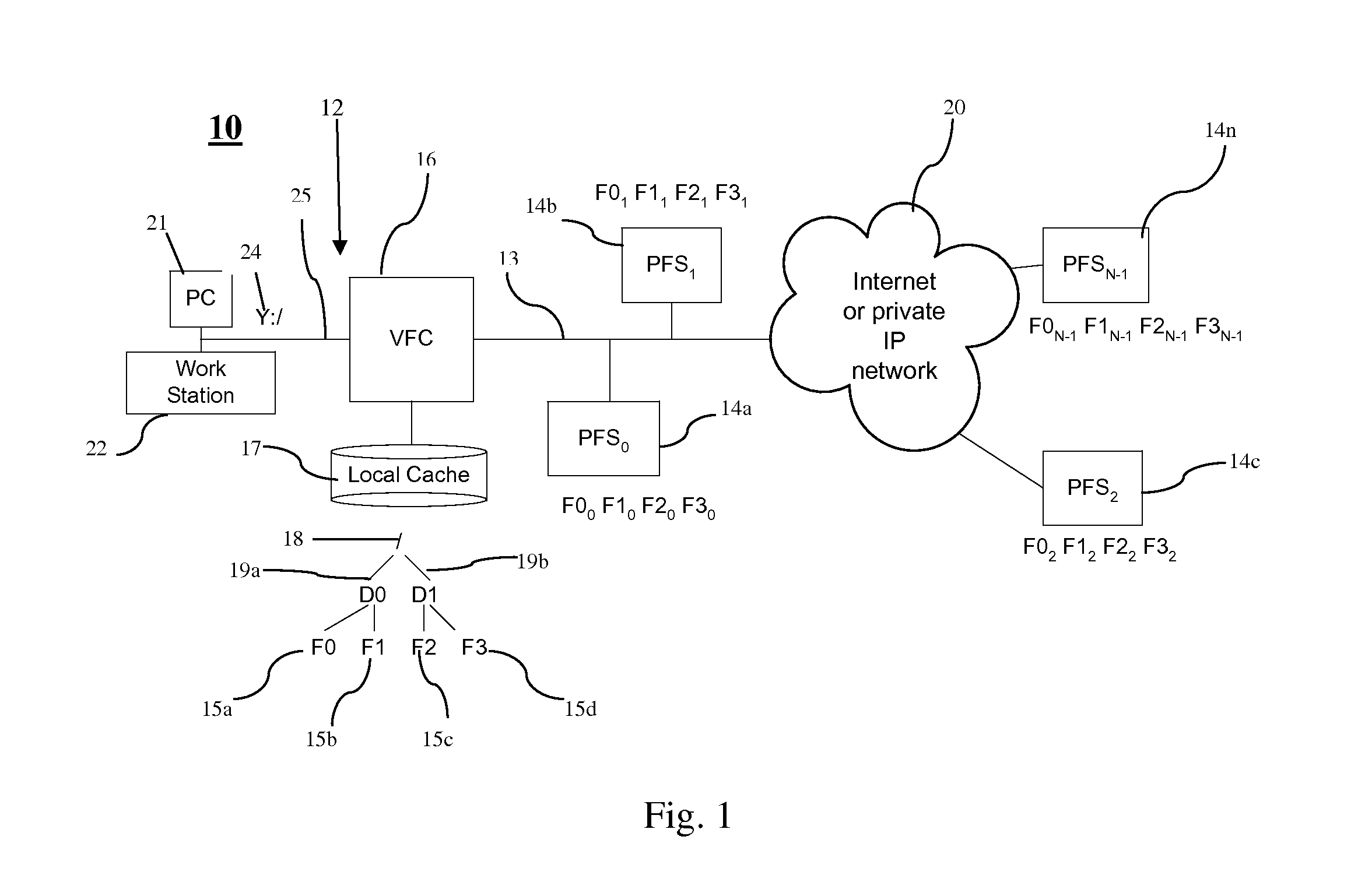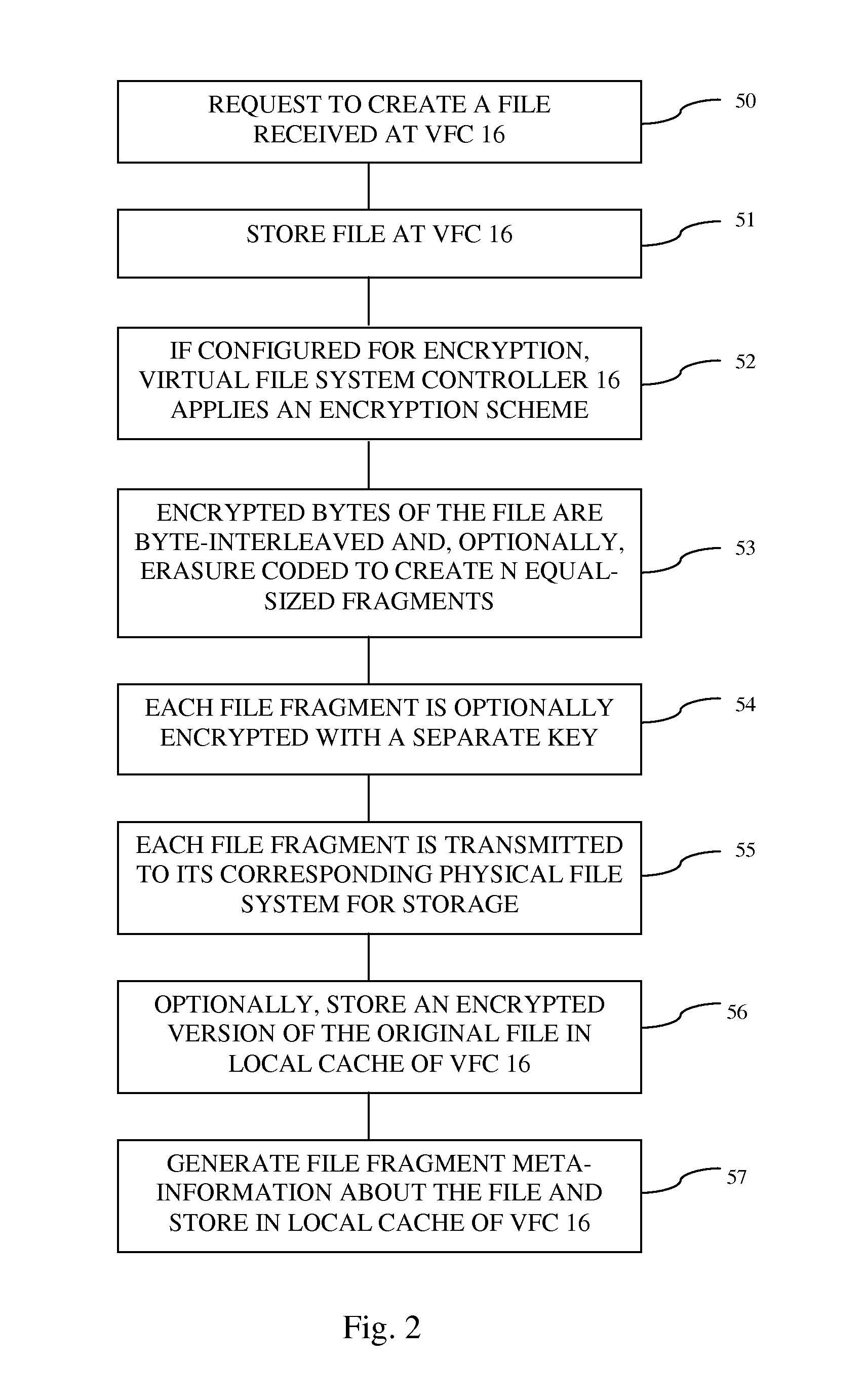Distributed fragments file system
a file system and fragment technology, applied in the field of system and method for distributing and storing files, can solve problems such as uninterrupted file access, and achieve the effect of enhancing security and reducing costs
- Summary
- Abstract
- Description
- Claims
- Application Information
AI Technical Summary
Benefits of technology
Problems solved by technology
Method used
Image
Examples
Embodiment Construction
[0024]Reference will now be made in greater detail to an embodiment of the invention, an example of which is illustrated in the accompanying drawings. Wherever possible, the same reference numerals will be used throughout the drawings and the description to refer to the same or like parts.
[0025]FIG. 1 is a schematic diagram of a Distributed Fragments File System (DFFS) 10. Distributed Fragments File System (DFFS) 10 aggregates multiple physical file systems (PFS) 14a-14n—some of which may be geographically dispersed—into a virtual file system (VFS) 12.
[0026]The following terminology is used:
[0027]1. N is the number of underlying physical file systems, each capable of hosting a conventional file system structure comprised of directories and files.
[0028]2. Virtual file system (VFS) aggregates constituent physical file systems denoted PFS0, PFS1, . . . PFSN−1.
[0029]3. A file in VFS is denoted as F, and it is fragmented and stored as file fragments F0, F1, . . . FN−1 in the underlying p...
PUM
 Login to View More
Login to View More Abstract
Description
Claims
Application Information
 Login to View More
Login to View More - R&D
- Intellectual Property
- Life Sciences
- Materials
- Tech Scout
- Unparalleled Data Quality
- Higher Quality Content
- 60% Fewer Hallucinations
Browse by: Latest US Patents, China's latest patents, Technical Efficacy Thesaurus, Application Domain, Technology Topic, Popular Technical Reports.
© 2025 PatSnap. All rights reserved.Legal|Privacy policy|Modern Slavery Act Transparency Statement|Sitemap|About US| Contact US: help@patsnap.com



